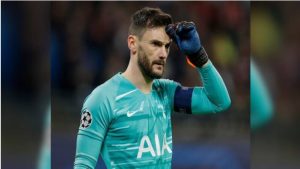Mathematicians and scientists often have a significant impact on society, helping us to understand the world around us and contributing to breakthroughs in technology, medicine, and conservation.
Most don’t get to enjoy much fame though, getting overshadowed by athletes, actors, and artists due to their broader appeal to society. Occasionally, though, mathematicians manage to poke their heads above the crowd and get noticed for their contributions.
One of these is Edward Oakley Thorp, an American mathematician who has enjoyed a very varied career that has seen him write books, teach, manage a hedge fund, and become an expert on one of the most popular casino games in the world.
Academic Success and Early Career
Thorp always had a natural aptitude for maths and science, leading to him winning several chemistry and physics competitions that earned him scholarships and a visit to see President Truman. He initially enrolled at UC Berkeley to do his undergraduate degree but moved to UCLA the following year.
Very soon after, Thorp received his PhD from UCLA following the completion of his theis “Compact Linear Operators in Normed Spaces”. He used his doctoral degree to secure a job at the Massachusetts Institute of Technology, where he worked from 1959 to 1961, before moving to New Mexico State University, and then the University of California.
Research in Blackjack
Blackjack is one of the world’s most popular casino games. Its exact history is disputed because games that share many similarities to modern-day blackjack emerged simultaneously in several parts of the world.
Today, it’s enjoyed by millions of players across the globe, many of whom go online to compete from their computer, smartphone, or tablet at online casinos. These casinos offer their players a variety of different variants, such as Premium Blackjack, High Roller Blackjack, and PokerStars Blackjack. Each one has its own unique rules, limits, and theming, but they all follow the same basic blackjack mechanics.
Blackjack’s relationship with computers goes back much further than the launch of the first online casinos in the mid-1990s. Thorp began using an IBM 704 digital mainframe computer to research the game’s probabilities in the 1960s.

Using the Kelly criterion, a probability theory designed to maximise expected value first published in 1956, Thorp began to devise blackjack strategy and card counting techniques.
Armed with this new theory, Thorp and the professional card player Manny Kimmel went to casinos in Las Vegas, Lake Tahoe, and Reno. The pair quickly proved their computer-researched theories and news spread fast amongst the blackjack community.
Bestselling Author
This interest in new blackjack strategies led Thorp to write his book Beat the Dealer in 1962, with an updated version being released four years later. Despite being very niche in its topic, Thorp sold more than 700,000 copies and secured a spot in the New York Times’ bestseller list.
Other Games
Not satisfied with researching the probabilities of blackjack, Thorp switched his attention to different games over the years, seeing success in roulette, baccarat, and backgammon. His work on roulette focused on monitoring the cadence of the wheel that would make the ball more likely to fall on one side of the wheel than any other.
Stock Market
Eventually, Thorp began to look beyond the casino for new places to push his mathematical abilities to the limit. One key interest for him was the stock market, which he saw as just another math problem to solve.
In the 1960s, he began using his expertise in probabilities and statistics to identify pricing anomalies in different markets that he could use to profit from this arbitrage.
This approach led to Thorp setting up and running two hedge funds; the first, Princeton/Newport Partners, operated between 1969 and 1989 using market neutral derivatives hedging. Five years after closing the first, Thorp opened Ridgeline Partners which operated between 1994 and 2002.
The success of Thorp’s mathematical approach to the stock market saw him reach a compound annual growth rate of 20% over 28 years of operation, an impressive feat.






